Known as the City of Lakes, the wonderful city gives every tourist a terrific experience of spending a few days in the lap of nature’s most seductive nature and splendid culture. Surrounded on three sides by the Aravalli range, the high mountains created a natural barrier to the fort city.
Udaipur, the royal city that carries the Rajput monarchy in its environs, is the historical capital of Mewar state. On your trip to this gorgeous city, you may learn about the monarchs’ luxurious lifestyles and their eye-catching art and architecture.
Location
Udaipur is situated in Rajasthan’s southernmost region. Udaipur also shares boundaries with the neighboring state of Gujarat.
How to reach?
Going to Udaipur is hassle-free, provided one knows the right option.
By Road: Udaipur is well-linked to several places in and around India. Buses are available from Jaipur, Kota, and Indore. The well-kept NH8 connects Udaipur to Delhi and Mumbai, roughly equidistant from the city. You can take an AC or non-AC bus or even a private cab.
By Rail: The Udaipur station receives a variety of trains from across all vital urban centers. To go to the city, take the Mewar Express, Ananya Express, Chetak Express, or Udaipur Express. You’ll find a plethora of taxis and auto-rickshaws waiting outside the station to transport you to your accommodation.
By Air: Udaipur’s Maharana Pratap Airport connects the city to the rest of the nation. Air India, Jet Airways, and SpiceJet all have daily flights from Delhi, Mumbai, and other important cities. The airport is around 20 kilometers from the city center, so taxis and other forms of transportation are readily available to take you to your destination.
What is the best time to visit Udaipur?
Monsoon and winter are the seasons to visit Udaipur.
Udaipur is gently stroked by winter. Temperatures range between 10 and 25 degrees Celsius.
The metropolis, on the other hand, serves as a perfect canvas for the monsoon rains. The rain gently falls on the lakes, which are filled to overflowing. This is the time to pull out your camera or take a boat trip to the city’s sights. Temperatures range from 25 to 35 degrees Celsius, with light rain.
History
Maharana Udai Singh II founded Udaipur in 1557 A.D. According to tradition, Chittorgarh was the capital of the Rajput kingdom of Mewar, but after being invaded several times by the Mughals, the capital was moved to Udaipur in 1568 A.D.
Udaipur town is packed with delightful surprises…
And here are the top 10 unmissable places:
Palaces
Some of Rajasthan’s architectural wonders lie in Udaipur. Yes, we are referring to the tall magnificent palaces only to give us a sneak peek into the illustrious Rajput history and courage.
1. City Palace
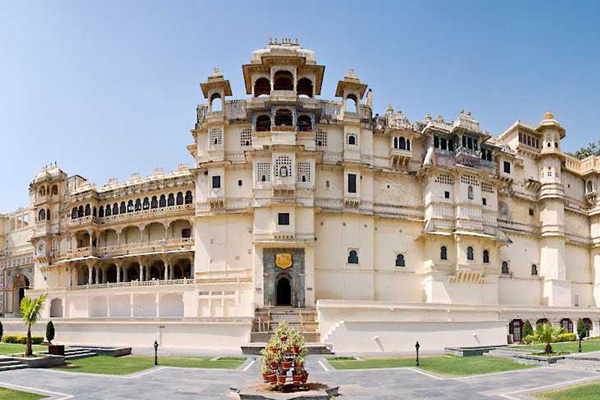
The interiors, minute mirror work, complex inlay work, gorgeous glassware, and lovely balconies of Udaipur City Palace are stunning! It displays the magnificent mix of Rajasthani, Mughal, and a portion of the architectural styles of Europe. Currently, the palace has mahals, courtyards, pavilions, passageways, terraces, apartments, and hanging gardens. The museum also displays some of the best features of Rajput art and culture, ranging from colorful paintings to the characteristic architecture of Rajasthani palaces.
The granite and marble building of the City Palace stands in stark contrast to its charming natural surroundings, nestled in the heart of the Aravallis. It graces the eastern banks, while the Mohan Mandir is in the northeast corner.
A large complex with many buildings, such as Bhim Vilas, Chini Chitrashala, Dilkhush Mahal, Laxmi Vilas Chowk, Darbar Hall, Sheesh Mahal, and Rang Bhavan.
The royal grandeur of this site has many fans in the film industry, and films like “Guide” and “Octopussy” have been shot here.
2. Jag Mandir Palace (or ‘The Lake Garden Palace’)
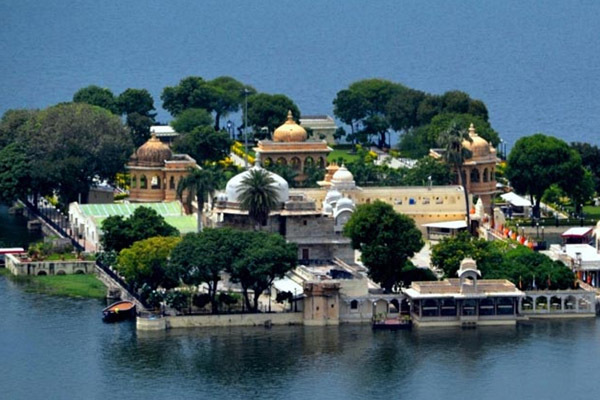
This three-story mansion on the southern island of Lake Pichola is made of marble and yellow sandstone. Seeing eight life-sized elephants made out of pristine white marble guarding the castle would be amazing.
The construction was started in 1551 by Maharana Amar Singh and was pursued by Maharana Karan Singh, who used it as a hideout for Shah Jahan until Maharana Jagat Singh fully accomplished it. It has a garden (ornamented with roses, jasmine flowers, palm trees, frangipani trees, and bougainvillea), a restaurant, and a museum.
3. Sajjangarh/Monsoon Palace
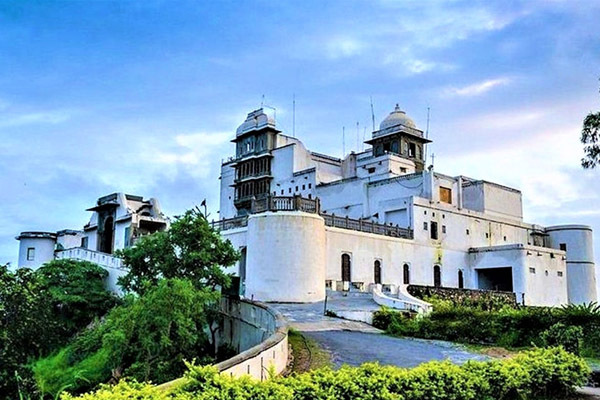
Sajjangarh Palace is a former royal residence of the Mewar dynasty that ruled over the area for centuries, situated on the outskirts of Udaipur on a hill. It is named for its owner, Maharana Sajjan Singh, who commissioned and built its palace in 1884.
It was initially designed as a nine-story astronomical observatory to observe and evaluate the arrival and pattern of monsoon clouds. It is easy to see that the palace is located on a strategic site on the hilltop of Aravalli, the Bansdara Peak.
However, due to the untimely death of Maharana Sajjan Singh, that did not become a reality. His successor, Maharana Fateh Singh, turned it into a recreational area. The Monsoon Palace was mainly used as a hunting lodge for the Mewar royal family and their visitors during and after his reign.
Sajjangarh Palace was built in the manner of the time, with towering towers, turrets, balconies, and pillars. It can even gather rainwater using cutting-edge scientific techniques. The name comes from the fact that it was initially erected to observe the approaching monsoons. During the monsoons, flee to the monsoon palace like the monarchs of yore.
Lakes
The lakes not only form the ideal scenery but also tell us about the regal past of Udaipur. The significance of Udaipur’s lakes lies not only in their uses but also in the fact that they are majorly artificial.
1. Lake Pichola
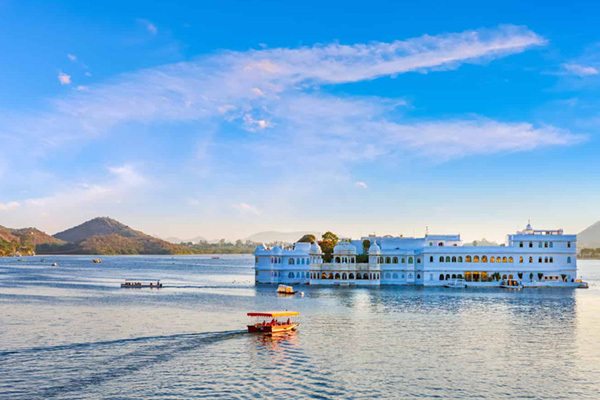
Lake Pichola is a man-made lake in the heart of Udaipur, Rajasthan. Lake Pichola is the city’s oldest and largest lake. It is a nature lover’s dream, surrounded by towering hills, ancient buildings, and bathing ghats. A trip to Lake Pichola isn’t complete without a boat ride, especially early in the morning.
During the evenings, it appears that the entire area has been dipped in gold, as the sun’s reflection on the heritage buildings and the pure lake turns golden. The captivating vistas will transport you to a new realm of tranquillity.
Pichola lake is 3 miles long, 2 miles wide, and 30 feet deep, and was built by Picchu Banjara under the reign of Maharana Lakha in 1362 AD. Enchanted by the lake’s beauty, Maharana Udai Singh expanded it and built a dam on its banks.
2. Fateh Sagar
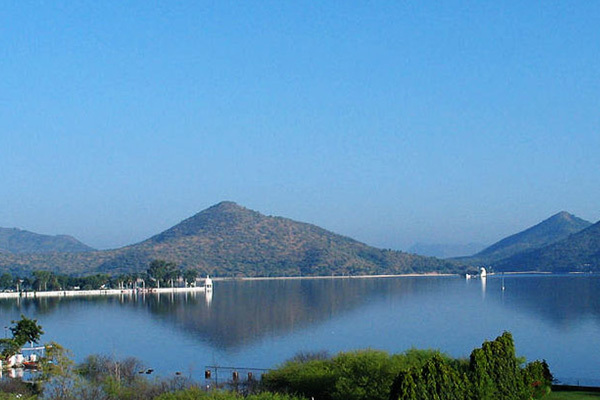
The entire circle of Fateh Sagar Lake can be seen while driving along the Moti Magri Road. Apart from spending a relaxing afternoon in this place’s tranquil beauty, you can also try your hand at boating and various other water activities available to tourists.
Fateh Sagar Lake is one square kilometer and divided into three islands. Nehru Park is the largest, with a boat-shaped café and a small zoo for children. It’s also a popular spot for picnics. A public park with water-jet fountains is located on the second island. The Udaipur Solar Observatory, located on the third island, is Asia’s largest solar observatory.
3. Udaisagar Lake
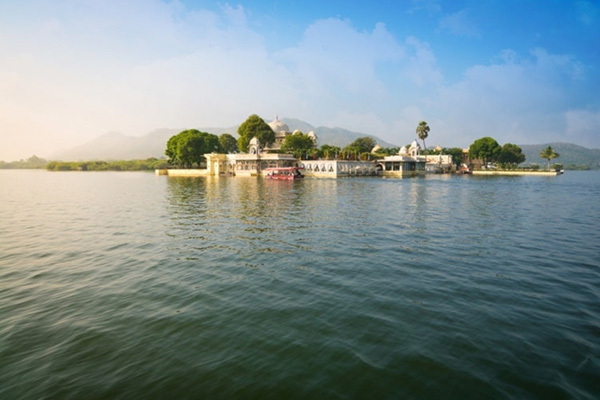
The lake, located approximately 13 kilometers east of the city, was built during the reign of Maharana Udai Singh. To meet the water needs of his kingdom, the Maharana commissioned the construction of a dam on the Berach River in 1559, which resulted in Udaisagar Lake. Kunwar Man Singh invited Maharana Pratap Singh to the shores of Udaisagar Lake in 1573 to discuss terms.
According to legend, Maharana Pratap Singh rejected the offer and insulted Man Singh. This action triggered the Battle of Haldighati three years later, in 1576. Many years later, in the vicinity of Udaisagar Lake, Maharana Raj Singh fought and defeated Emperor Aurangzeb’s army.
When packed to its gross capacity of 31.15 million cubic meters, this lake has a water spread area of 5.20 square kilometers, and its free catchment area is 19684 hectares. The lake’s length and breadth are 4.2 and 2.75 kilometers, respectively, with a maximum depth of 9 meters near the dam site.
Ahar, a tributary of Berach, flows through Udaipur City and meets the Udai Sagar lake near Sukha Naka. Aside from that, several tiny seasonal rivers and streams flowing from the neighboring hills provide water to the lake.
Because of continual sedimentation over the past 400 years, the bottom of this small lake is silty. A large portion of its water is used for agriculture and M/s Hindustan Zinc Ltd industrial purposes. It took time to develop, but it still makes a great weekend destination.
4. Jaisamund Lake
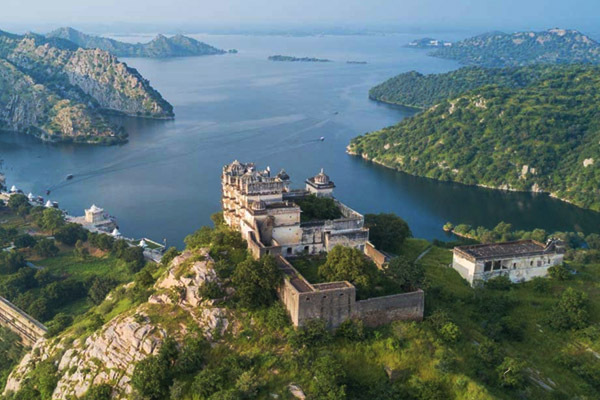
After Govind Ballabh Pant Sagar, Jaisamand Lake is the country’s second-largest manmade lake, covering approximately 100 square kilometers. The Jaisamand Wildlife Sanctuary, home to various unique species and migratory birds, surrounds it. The summer palaces of Udaipur’s queens also make for a lovely backdrop. It’s a relaxing spot in naturally beautiful surroundings. There are six cenotaphs and a Shiva temple in the center of the marble dam. Locals call it Dhebar Lake as well.
The lake was built by Maharaja Jai Singh in the 17th century, specifically in 1685, while constructing a dam across the Gomti river.
The tribe of Bhil Minas lives on three islands in this lake. Baba ka Magra refers to the two larger islands, and Piari refers to the smaller island. To the lake’s north is a palace with a courtyard, while to the south is a pavilion with 12 pillars. The lake also has a vast bund that rises beyond 1200 feet. The Jaisamand Lake is clean, gorgeous, and a true paradise for nature lovers. This oasis of calm is a must-see away from the hustle and bustle of the city.
Other places
Other than the conventional palaces and religious places, there is more to Udaipur, which can spellbind anyone
1. Saheliyon Ki Bar
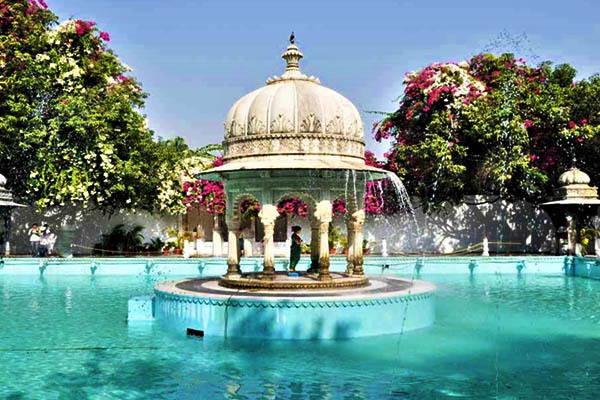
Saheliyon Ki Bari is also called the Garden or the Courtyard of Maidens. As the name implies, it was constructed for the maidens who followed the Princess following her marriage to Maharana Sangram Singh. The captivating Saheliyon Ki Bari is situated on the shores of Udaipur’s Fateh Sagar Lake.
It boasts rich green lawns that have been tastefully manicured, canopied strolling paths, lotus pools, marble pavilions and statues, and stunning fountains. Most people consider Saheliyon ki Bari one of the most incredible spots in Udaipur to rewind with friends, family, or alone.
Saheliyon ki Bari is an 18th-century structure regarded as of enormous historical significance in India. You can find greenery in a dry, arid place like Rajasthan in Udaipur.
2. Fairs and Festivals
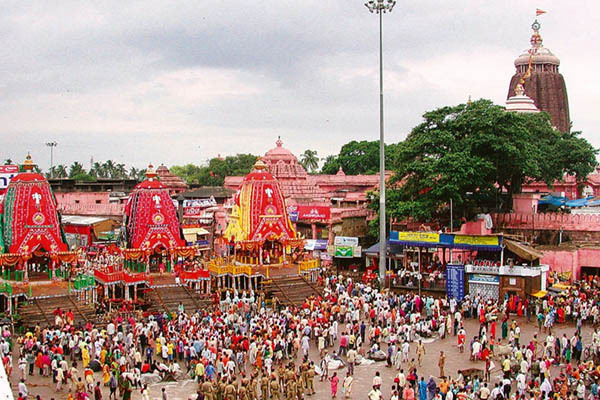
Udaipur has an explosion of music, dancing, and color so frequently that it is called the City of Celebration. You may attend the magnificent Mewar Festival in March, which honors Lord Shiva and Parvati. The Teej festival allows ladies to relax on one of the city’s numerous swings attached to trees.
The Hariyali Amavasya Mela begins in August. Enjoy two days of games, substantial wheel rides, street cuisine, traditional music, and dance. Don’t forget the light and sound show in Kumbhalgarh Fort.
3. Doodh Talai Musical Garden
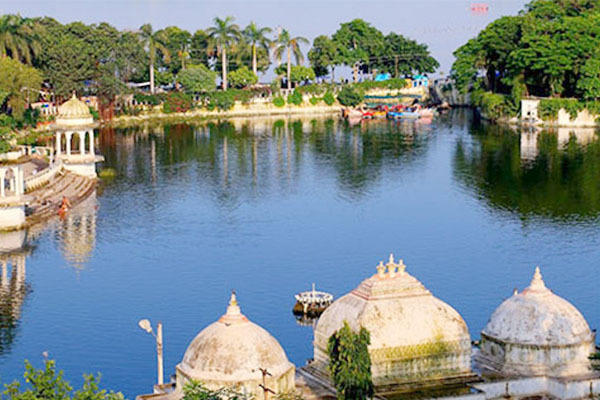
Doodh Talai (Milky Lake) is a tiny lake between Lake Pichola and Machala Magra (Fish Hill). The Udaipur Urban Development Trust created the garden.
Doodh Talai Musical Garden is a rock and fountain garden with a beautiful city view. An aerial tramway (cable car) connects the Doodh Talai garden with the Karni Mata Temple.
Shopping
Explore the twisting mazes of the bazaars, which are brimming with all the riches of this city.
The city of lakes has much to offer buyers, including bright handicrafts, complex jewelry, and genuine leather products. At Mochiwada, sink your feet into the warm leather embrace of traditional Rajasthani footwear. The Hathipole market is impressive with the shine of silver jewelry, bright bandhani textiles, and brass and marble souvenirs.
The glimmer of precious stones, burnished copperware, and antique goods will entice you to Bada Bazaar. At Lakhara Chowk, you can hear the exquisite glass bangles tinkling. The Bhatiyani Chohatta sells stunning Rajasthani miniature paintings.
The food
Mewari food is flavorful and fresh; its egg and non-vegetarian curries are famous. At Ambrai restaurant, try the classic Laal Maas. This is a curry of delicate mutton cooked in red chili and herb sauce. Dal baati is a mixture of toor, moong, urad, and moth dal that will keep you warm in Udaipur’s winter. As you wander about the city, eat delicacies like kachori, chaat, anda bhurji, jalebi, and more. Soak in the spicy, sour flavors of Gatte ki Sabzi—seasoned gram flour pieces steeped in a tangy yogurt-based sauce.
Additional tips
If you enjoy outdoor activities and adventure, Udaipur offers cycling tours, trekking, and helicopter flights.
If you plan self-guided sightseeing in Udaipur, bring a tourist map.
Choose a hotel based on which one has the finest view.
If you have time, go to the neighboring Shilpgram and Eklingji temples.
Interesting facts about Udaipur
Such a beautiful city is supposed to be filled with thrilling information about it.
- When Shah Jahan was creating the renowned Taj Mahal, it is claimed that Jag Mandir influenced him.
- The Udaipur Solar Observatory is regarded as Asia’s most excellent observatory.
- The wall of Kumbhalgarh Fort is the world’s second-longest wall, behind the Great Wall of China. Lake Palace, known as Jag Niwas, was the setting for a Bond film. It was also named the most romantic hotel in the world.
- Udaipur is rich in copper and zinc, which have been mined since medieval times and are still mined now.
- Udaipur is known for its lakes and palaces, but its greatest asset is a treehouse built on a 65-year-old mango tree. A Surat-based craftsman made the treehouse in Udaipur at the request of a local businessman without removing a single limb of the tree. The Limca Book of World Records also lists this unique tree home.
- Be careful of monkeys in and around temples.
Conclusion
What is it like to walk in the footsteps of a king? Visit Udaipur for a royal experience. In Udaipur, you will find women spinning in color, elegance, and harmony in a city steeped in history and palaces, where beautiful paintings can be found around every corner. The timeless streets and breathtaking scenery are unrivaled. Every description of its allure is accurate, from “Venice of the East” to “Jewel of Mewar.”Your trip to Udaipur will be more enjoyable after reading this article.
Pack your belongings and prepare to travel to this awe-inspiring location.
People are also reading:




